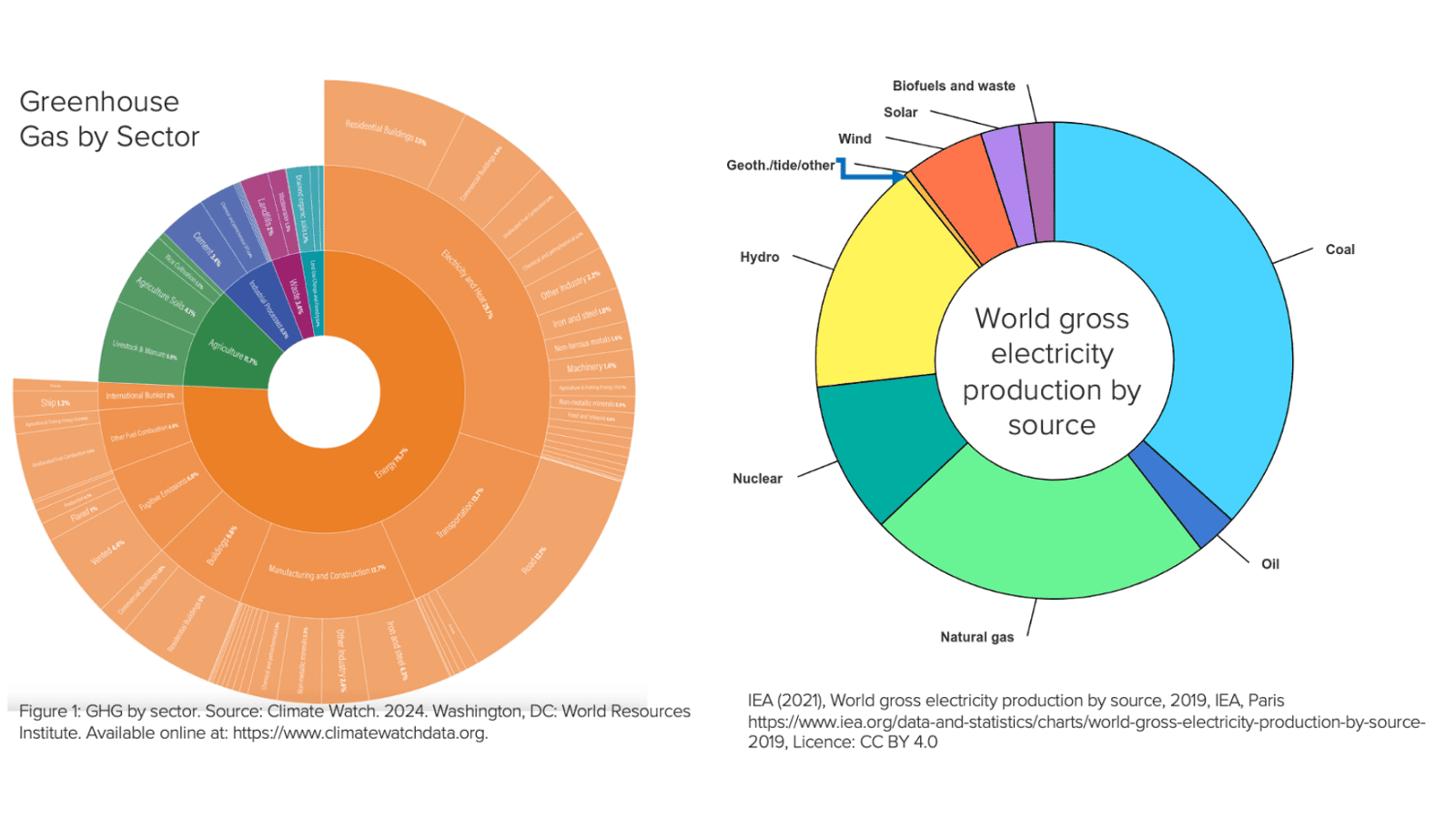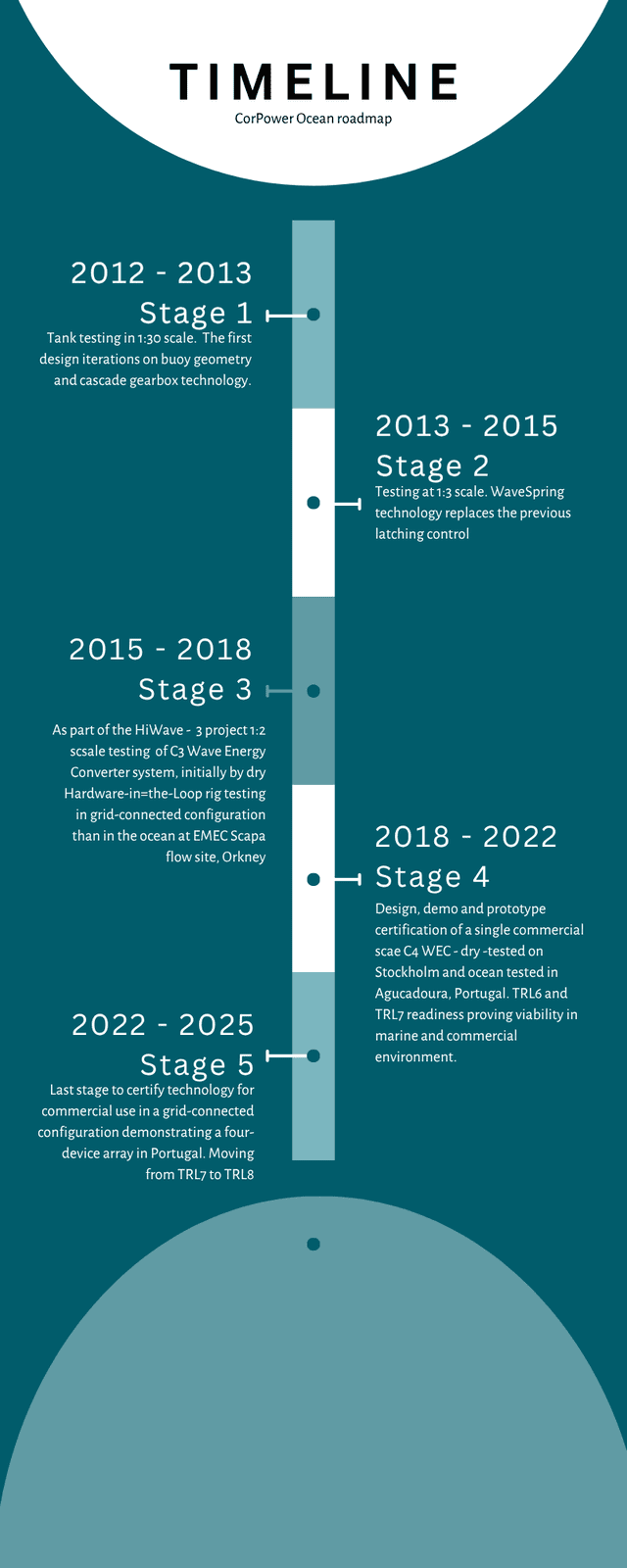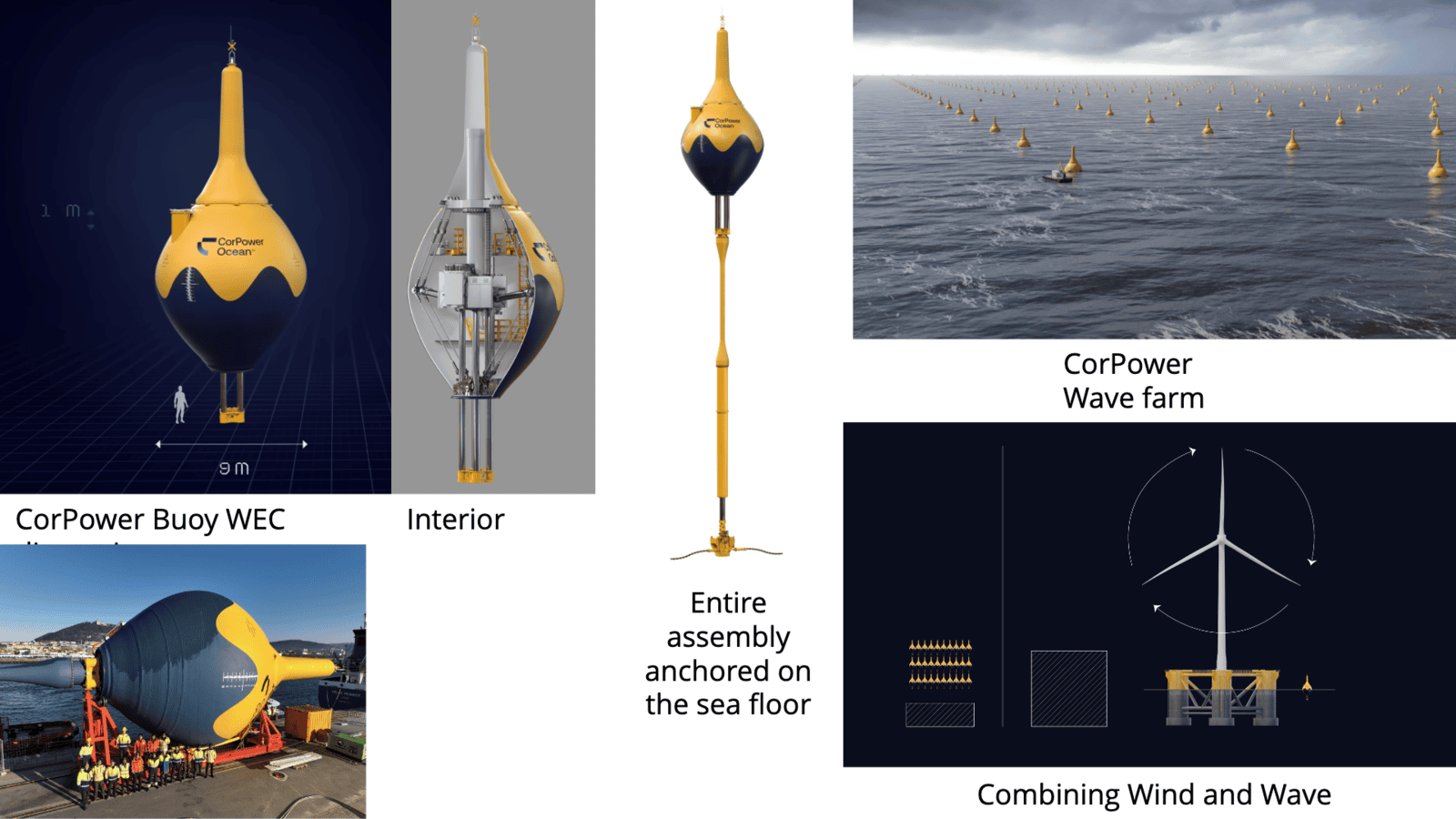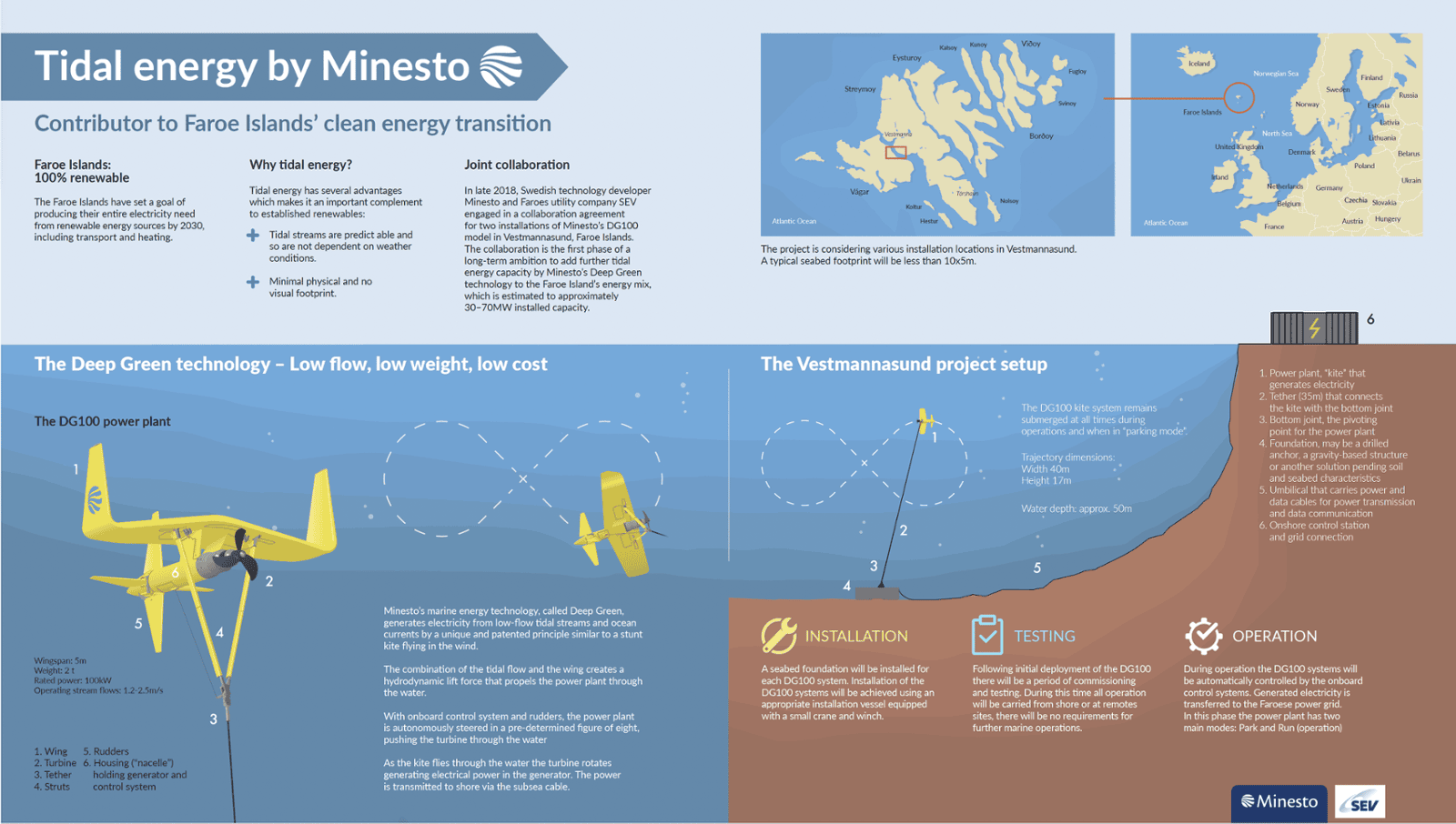Tidal Stream, Wave Energy + Creative Imagination
Episode 1 - the big picture and two standout Swedish pioneers

True gifts from God, in three episodes
- CorPower Ocean from Sweden, a wave energy innovator, inspired by the heart’s pump mechanism, converting wave energy into electricity, at increasing scale.
- Minesto - a tidal stream energy pioneer, inspired by the aerodynamics of kite-flying.
- Inyanga Marine Energy Group - a tidal stream energy pioneer from Cornwall in England.
- Mocean Energy is a Scottish wave energy pioneer.
- SAE Renewables - a tidal stream energy and battery storage company headquartered in England.
- NOVA Innovation is another Scottish pioneer in tidal stream energy.
- Orbital Marine Power, a Scottish tidal stream energy company.
- Seaturns, a French wave energy pioneer.
- Spiralis Energy Ltd, a tidal and river energy company based in England.
- Tidal Technologies Limited - an English tidal stream energy innovator.
- ZOEX Energy, the UK’s only female-founded wave energy company in Scotland.
The Big Picture
In May 2021, the International Energy Agency (IEA) published a significant report: Net Zero Emissions by 2050: A Roadmap for the Global Energy Sector.[2]
It aimed to describe a feasible roadmap for the global energy sector to play its part in limiting the rise in global temperatures to 1.5°C, which aligns with the goal of the Paris Agreement by 2050. Roughly 70% of greenhouse gas emissions are generated by the energy sector, of which nearly 30% comes from electricity generation, which is currently heavily reliant on fossil fuels (see the image on the left, Figure 1).
In May 2021, the International Energy Agency (IEA) published a significant report: Net Zero Emissions by 2050: A Roadmap for the Global Energy Sector.[2]
It aimed to describe a feasible roadmap for the global energy sector to play its part in limiting the rise in global temperatures to 1.5°C, which aligns with the goal of the Paris Agreement by 2050. Roughly 70% of greenhouse gas emissions are generated by the energy sector, of which nearly 30% comes from electricity generation, which is currently heavily reliant on fossil fuels (see the image on the left, Figure 1).

The right-hand image shows the global contribution of electricity from energy sources. Wind currently provides the lion’s share of ORE at 5.3%, with solar at 2.6%. Solar, like wind, is growing rapidly. According to the Energy Institute, both technologies have matured, achieving sufficient scale, making them cost-competitive with coal and gas-fired power plants.[3]
By contrast, wave and tidal stream contribute just 0.5%, as indicated by the blue arrow in the image. Supporting technologies are still in the early lifecycle stage, but in its International Vision for Ocean Energy, OES (Ocean Energy Systems[4] ),predicts that both wave and tidal stream will become cost-competitive in the next decade, and grow rapidly as the technology advances. This will generate 680,000 jobs and $340 billion in gross value added (GVA), preventing over 500 million tonnes of carbon emissions.
International collaboration and upgraded national grids are required
Tidal Stream and Wave Energy Basics
- Attenuators that look like floating cylinders linked together to form wing-like structures, parallel to the wave direction, that flex and convert the surge, sway and heave motion of the waves to generate energy.
- Bulge Wave Technology uses a rubber tube filled with water tethered to the ocean floor and directed towards the waves. Water from the waves enters the rear of the sausage-like tube, creating a pressure bulge that powers a turbine at the front end to generate power and then pumps the water back into the sea, ready for the next wave.
- Point Absorbers that bob on the water’s surface, absorbing energy from all directions and converting it into electricity.
- Oscillating Wave Surge Converters. These devices sit on the seafloor in shallow water, with arms that oscillate back and forth, and pump water at high pressure to an onshore hydroelectric conversion plant to generate electricity.
- Oscillating Water Columns, wave energy devices using wave motion to compress and decompress air in a chamber, forcing air through a turbine to generate electricity,
- Overtopping Devices, guiding waves into reservoirs at high tide, and then releasing the water at low tide to generate kinetic energy,
- Rotating Mass Wave Energy Converters ride on the surface and power a rotating alternator as the devices sway and roll in the waves, capturing the energy.
- Submerged Pressure Differential Devices are installed on the seabed. They consist of a hinged flap that moves back and forth, driving a piston to generate electricity.
EMEC - the vital role of an innovation catalyst
The European Marine Energy Centre (EMEC), founded in 2003, is the world’s leading ocean energy tester. It acts as a catalyst, helping wave and tidal stream innovators test and prove their technology and assess performance. It operates two test sites in the Orkneys: 1. The Fall of Warness, a grid-connected test site west of the island of Eday, with high velocity marine currents (7.8 knots at spring tides).2. The Billia Croo wave test site in the North Atlantic off Orkney, an area recognised as having among the highest potential wave energy in Europe. Waves can reach up to 18 metres, almost 60 feet high.
Five 11kV subsea cables are connected to the EMEC substation, which feeds the national grid with the electricity generated by the WECs being tested. EMEC is also exploring integrating different clean energy systems, including hydrogen and fuel cells, and the storage and refuelling of e-fuels (synthetic fuels produced from electricity and CO2). EMEC, therefore, plays a pivotal role in the growing tidal stream and wave energy ecosystems.
CorPower Ocean
Background and inspiration
CorPower Ocean, which develops wave energy converters, was founded in 2009 by Patrick Möller, CEO and technology entrepreneur and Dr Stig Lundbäck, a Stockholm cardiologist.
Practical biomimicry
Lundbäck delved deeply into how the heart works and discovered the principles behind its ‘dynamic adaptive piston pump’ (DAPP) functionality. He is not an engineer, but he has an engineer’s mind. He has turned his discovery into practical and worthwhile uses. He invented several products, such as the Surf Cleaner to remove oil from contaminated water from industrial liquid waste and harbour water. His insights into how the heart uses stored hydraulic pressure, not muscle, for the return stroke of a heartbeat led to the invention by Dr Hals Todalshaug at Norwegian University of Science and Technology (NTNU) of CorPower’s ‘WaveSpring’ technology. Co-developed with CorPower, this control mechanism pulls the buoy downwards after a wave has made it rise.

How the CorPower C5 WEC and CorPack work

Update: 23/7/25 - CorPower secures €40 Million additional funding from the EU Innovation Fund for the VianaWave project
The VianaWave project, approximately 70KM north of Aguçadora is described a pre-commercial project that will deliver a 10MW wave energy farm in the 2028/9 timeframe. Portugal’s National Energy and Climate plan aims to reach 200MW of wave energy by 2030. This is another vote of confidence in CorPower, bringing clean ocean energy and local skilled jobs to the country. Along with Great Britain, and Ireland, Portugal has significant wave energy potential. According to the pan-European EVOLVE Portugal could generate 15.5GW of wave energy. A 1,793KM coastline, the Atlantic Ocean and 70% of its population living in coastal areas, it is little wonder that the Portuguese have such high hope for wave energy.
Minesto
Background and inspiration - Kites and Dragons
A growing business focused on tidal stream energy
Proving its capabilities in Europe and Asia
- off the Faroe Islands, an archipelago roughly halfway between Scotland and Iceland;
- in the Holyhead Deep off the Welsh coast;
- and in Taiwan, collaborating with the Research Centre for Ocean Energy and Strategies at the National Taiwan Ocean University.
Delivering electricity to the Faroes
The Holyhead Deep
Establishing the first tidal energy array in Taiwan
Multi-site Anglo-French Tidal Stream Industry Energiser
Tidal Stream and Wave Energy are Coming of Age
- Tidal range of the Severn Estuary
- Net Zero Roadmap
- Cost comparisons of renewable and conventional energy sources
- International Vision for Ocean Energy, OES (Ocean Energy Systems)
- 'The £billion paradox'
- Gang Li and Weidong Zhu on Harvestable Energy
- Billia Croo, Orkney
- Minesto Kite figure of eight video
- Major performance milestone in Luna

